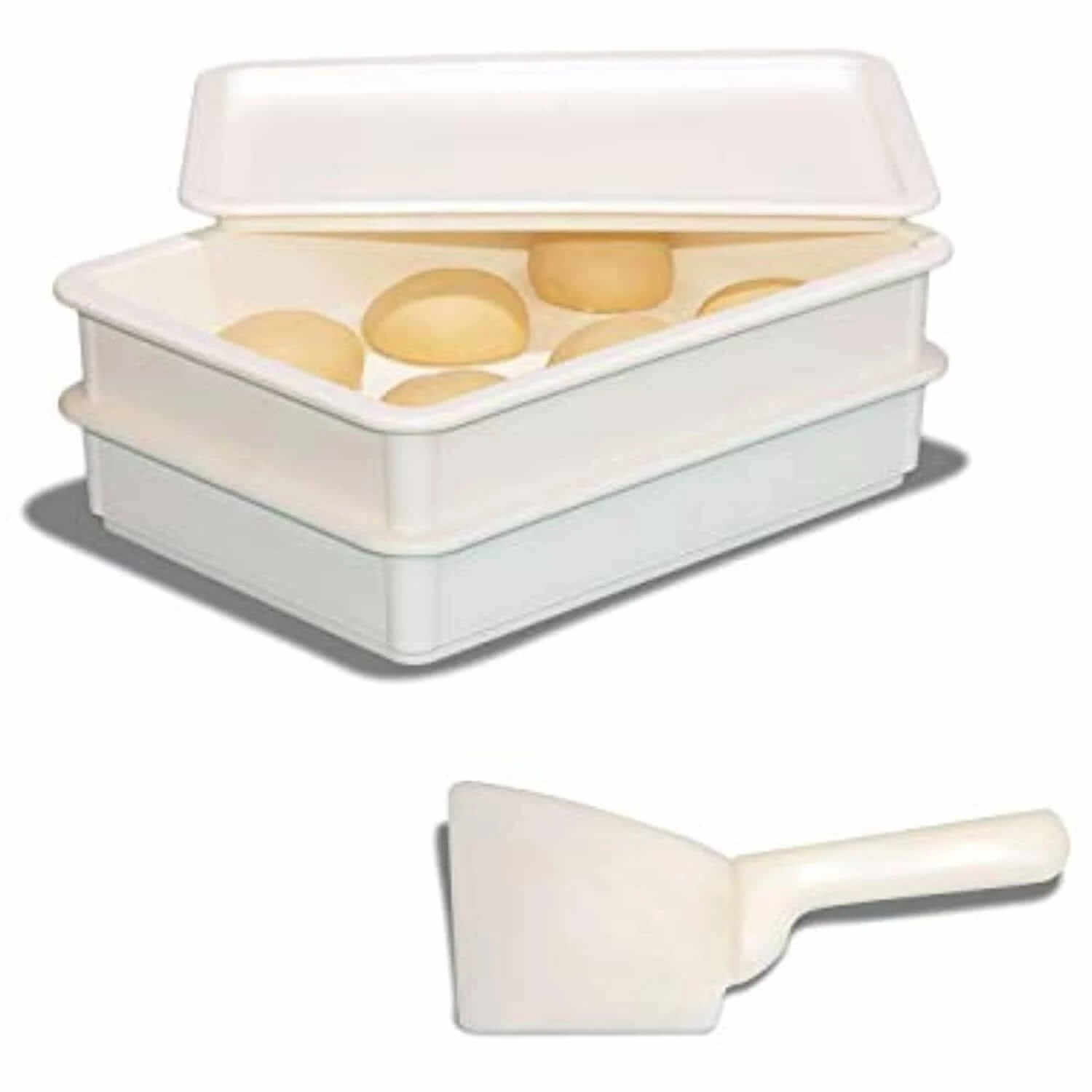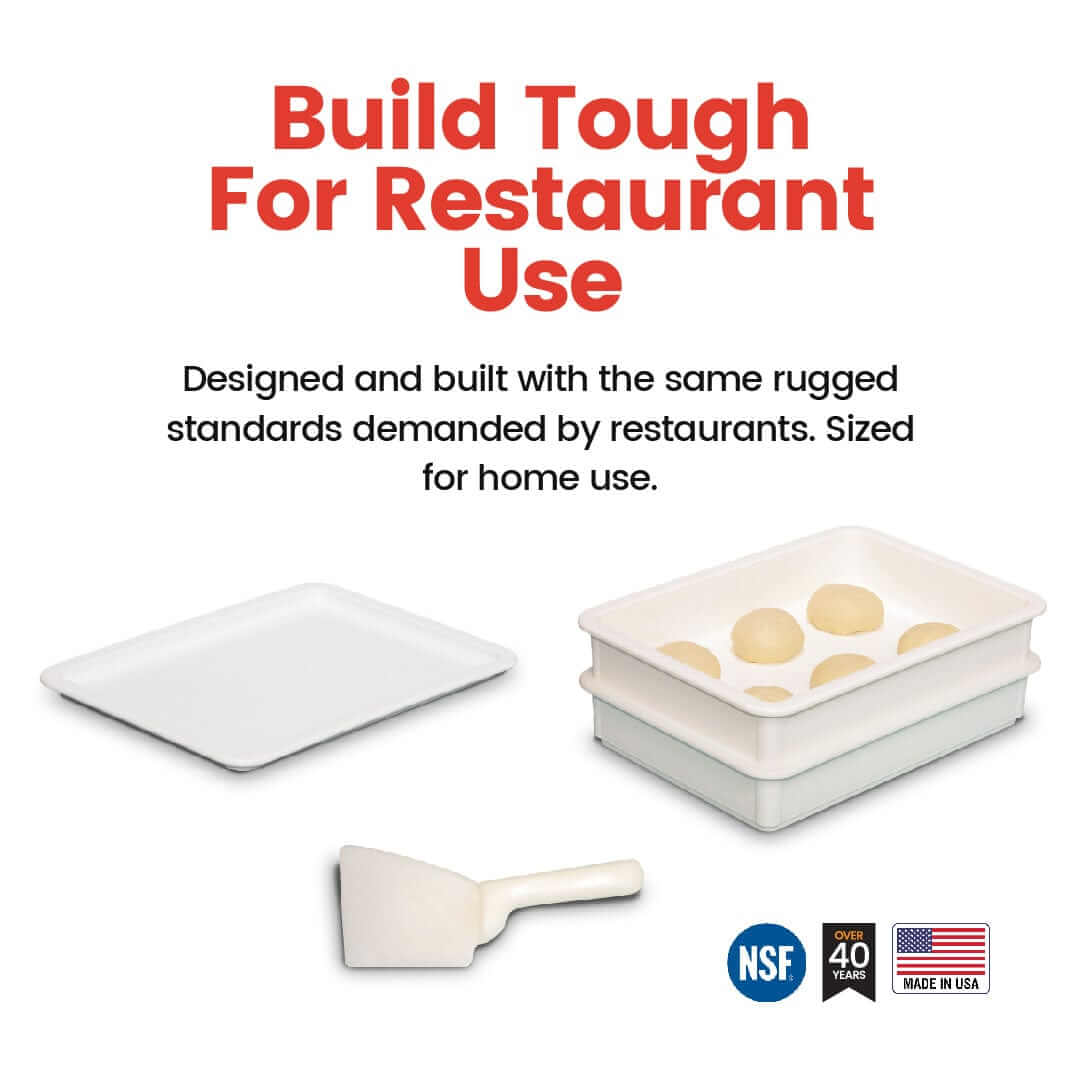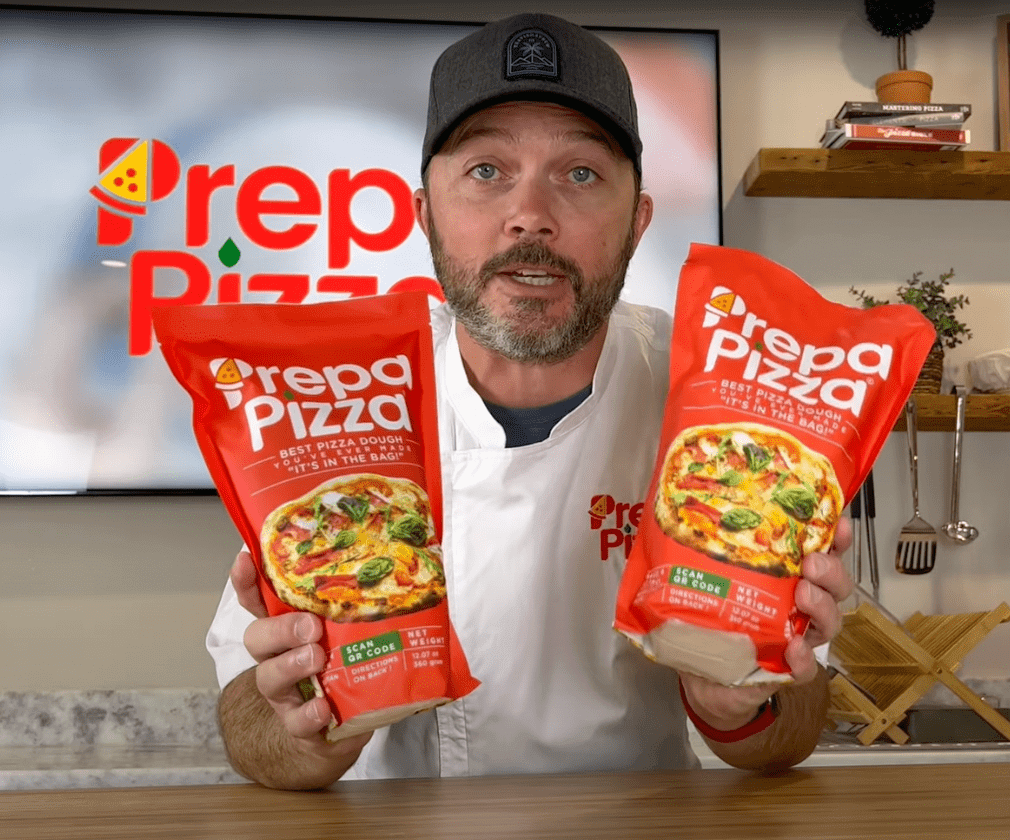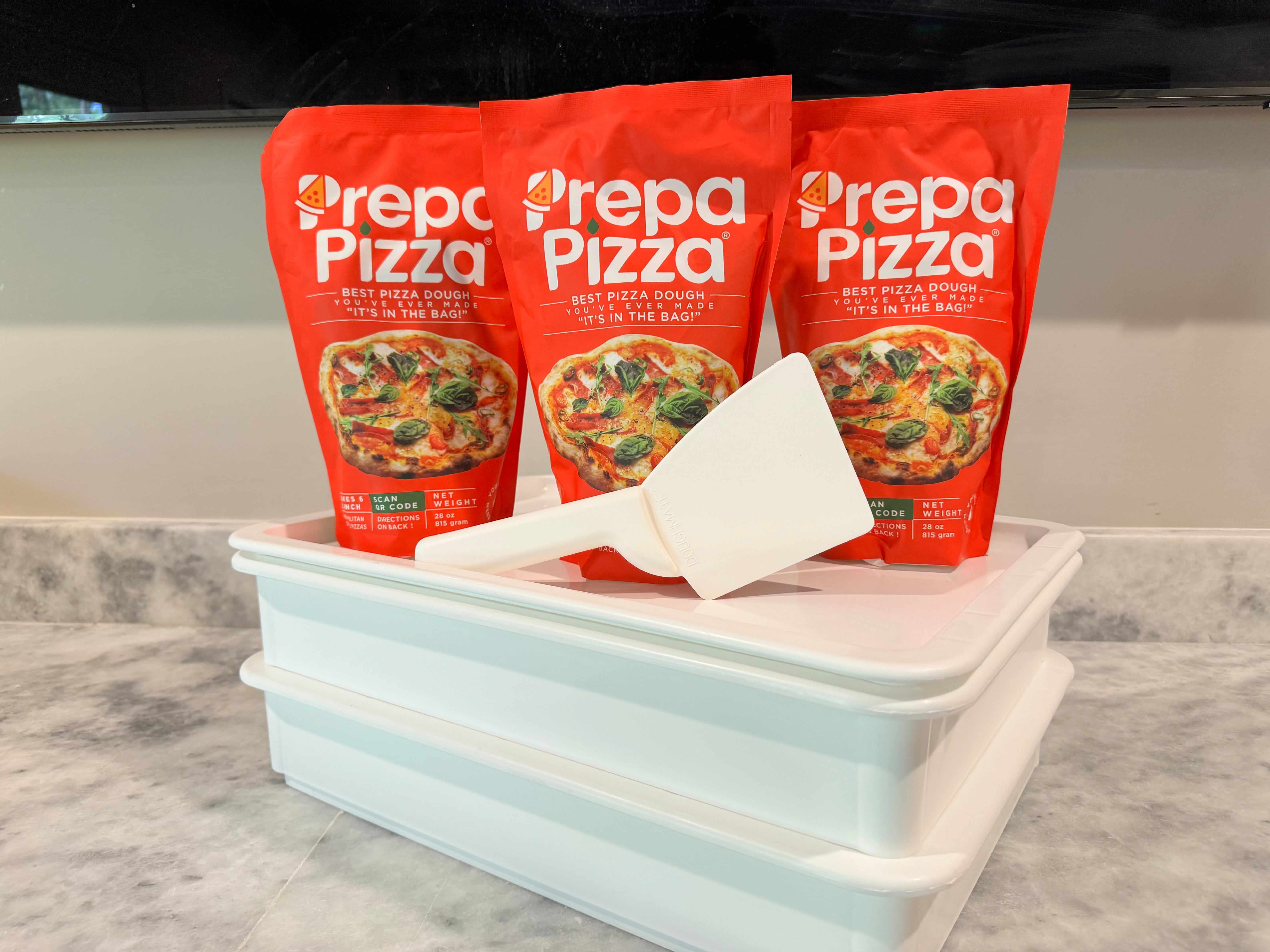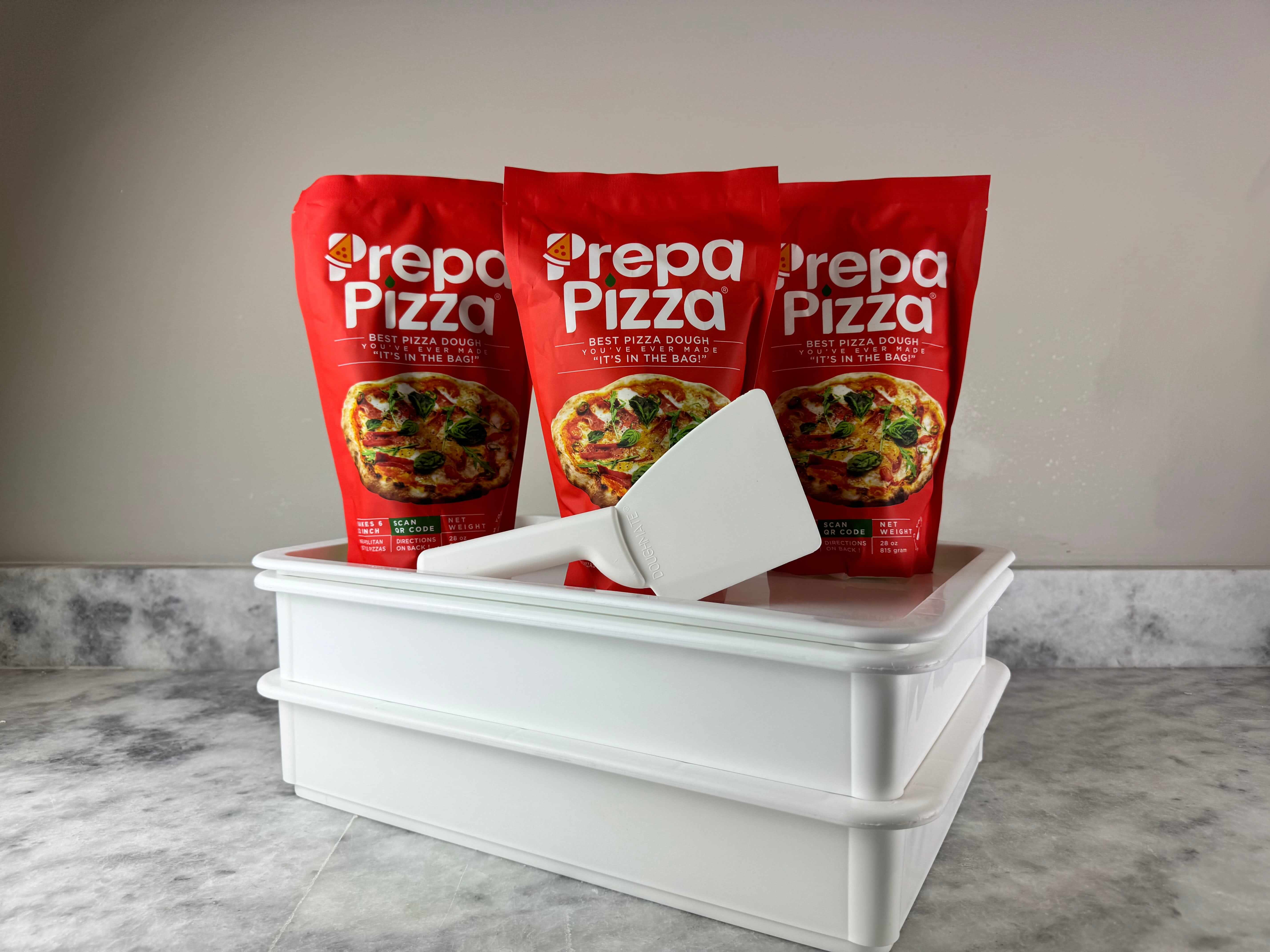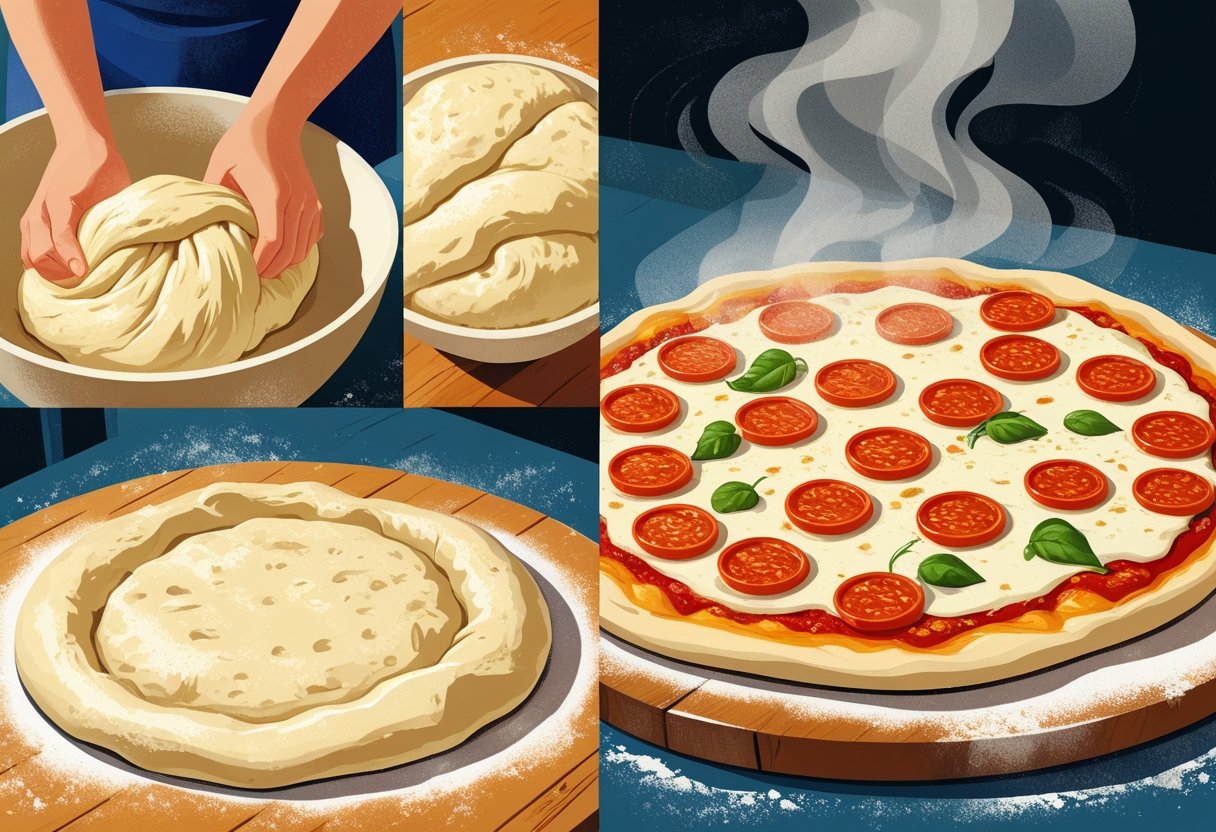
How to Get Chewy Pizza Crust Texture: Expert Tips for Perfect Homemade Pizza
Getting a chewy pizza crust starts with using the right dough and proper technique. The key to achieving that perfect chewiness lies in the type of flour, hydration levels, and fermentation time. By starting with premium-quality premade dough like the one offered by Prepa Pizza, you ensure you’re working with restaurant-quality ingredients that simplify the process and deliver consistent results. You can explore their dough kit designed for this purpose at Prepa Pizza's premade dough page.
When you use Prepa Pizza’s premade dough, you’re already ahead because it’s crafted to balance moisture and gluten development, which are essential for chewiness. Simple steps like allowing the dough to rest properly and baking at the right temperature can turn your pizza into a chewy, tender delight. Using quality dough means less guesswork and more focus on mastering the baking process.
Key Factors for Achieving Chewy Pizza Crust
Getting a chewy pizza crust requires attention to specific dough characteristics and baking conditions. These include the structure of the dough, moisture content, fermentation timing, and the baking environment. Using quality premade dough, like Prepa Pizza’s restaurant-quality option, ensures a consistent base that highlights these factors effectively. You can explore their premium premade dough for ease and quality.
Each element works together to develop the texture that defines the ideal chewy crust, balancing elasticity, air pockets, and a tender bite.
Gluten Network and Protein Content
The gluten network is the backbone of chewy pizza dough. Gluten forms when water hydrates proteins gliadin and glutenin in the flour, creating elasticity and strength. To get that desired chewiness, you need dough made with high-protein flour, which has more gluten-forming potential.
Prepa Pizza’s dough uses carefully selected flour with a higher protein level to develop a robust gluten matrix. This structure traps air and gas during fermentation, creating pockets that enhance chewiness when baked.
Without a strong gluten network, your pizza crust will be dense and crumbly, rather than tender and springy. Proper kneading also aligns and strengthens gluten strands, which Prepa Pizza’s process addresses to ensure consistent chewiness.
Role of Hydration Level
Hydration is the ratio of water to flour in your dough, expressed as a percentage. A higher hydration level (usually around 65-70%) improves dough extensibility and helps develop a soft yet chewy texture.
Water content directly impacts gluten development and starch gelatinization during baking. More hydration means a dough that is stickier and softer but more elastic and chewy in the final crust.
Prepa Pizza’s premade dough is carefully balanced to maintain an optimal hydration level, which allows for better oven spring and a tender interior. Too low hydration results in a dry, tough crust, while too high can make the dough hard to handle.
Proper Fermentation and Resting
Fermentation time allows yeast to produce gas, which inflates the gluten network and contributes to crust texture and flavor. Resting your dough for at least 1 to 2 hours at room temperature encourages gluten relaxation and gas retention.
Extended, slow fermentation (cold proofing overnight or longer) develops flavor compounds and increases chewiness by improving gluten strength and dough extensibility.
Prepa Pizza’s dough undergoes controlled fermentation to ensure each batch offers balanced flavor and ideal chewiness. Skipping or shortening fermentation time will produce a less developed structure and a crust that is chewy but lacks depth.
Temperature and Baking Surface Impact
The baking surface and oven temperature significantly affect the crust’s final texture. Baking on high-heat surfaces like a pizza stone or baking steel promotes rapid oven spring and crust development.
These materials absorb and retain heat, searing the dough quickly to form a crisp exterior while maintaining a chewy interior. Prepa Pizza dough responds well to baking on stones or steels at temperatures above 500°F (260°C), which brings out the best texture.
Lower heat or insufficient surface contact leads to a dull, chewy crust without crispness. Using proper baking tools and temperature is crucial to maximize the characteristics of quality premade dough.
Essential Ingredients for Chewy Pizza Dough
Achieving the perfect chewy pizza crust starts with selecting the right ingredients and handling them correctly. Key factors include the type of flour you use, how you activate your yeast, the water temperature and quality, and the balance of salt and olive oil in your dough.
Using Prepa Pizza's premade dough gives you a solid starting point, as it incorporates restaurant-quality ingredients designed for ideal texture and flavor. You can also customize your dough from scratch by paying close attention to these essentials.
Flour Selection: Bread Flour vs. All-Purpose vs. 00 Flour
Flour choice directly affects the chewiness of your pizza crust due to its protein content.
- Bread flour is the top choice for chewiness. It has a higher protein level (typically 12-14%), which creates more gluten during kneading, resulting in an elastic, chewy texture.
- All-purpose flour has less protein (around 10-11%), so it produces a softer, less chewy crust. It’s easier to work with but sacrifices some chewiness.
- 00 flour is finely milled and often used in traditional Neapolitan pizzas. It has moderate protein and gives a soft yet slightly chewy crust with a tender bite, ideal if you want a balance between softness and chewiness.
A premium dough like the one Prepa Pizza provides uses bread flour for consistent chewiness that meets professional standards.
Choosing and Activating Yeast
Yeast is essential for dough rise and texture. You have two main types: active dry yeast and instant yeast.
- Active dry yeast needs to be dissolved in warm water (about 105°F to 110°F) before mixing with flour. Activating it correctly ensures a strong rise, which helps create air pockets in your crust for good chewiness.
- Instant yeast can be mixed directly into dry ingredients and works faster. It also yields consistent rises but requires less prep.
Use fresh yeast and the right proofing environment to allow the dough to develop flavor and elasticity. Prepa Pizza’s dough balances fermentation perfectly for optimal chewiness.
Water Temperature and Quality
Water temperature affects yeast activation and gluten development.
- Use warm water between 100°F and 110°F to activate active dry yeast without killing it. If too hot, yeast dies; if too cold, yeast won’t activate properly.
- The water should be clean and free from strong chlorine or impurities, as poor water quality can affect yeast performance and dough flavor.
Tap water filtered to remove chlorine or bottled spring water often works best. Prepa Pizza uses carefully measured water in their dough to control texture and rise.
Salt and Olive Oil in Dough
Salt and olive oil are vital for taste and dough structure.
- Salt strengthens gluten by tightening the protein network, which improves the dough’s chewiness and adds flavor. Typically, salt is about 2% of the flour weight.
- Olive oil tenderizes the dough slightly by coating gluten strands, balancing chewiness with a pleasant softness. It also adds moisture and richness.
Avoid adding too much olive oil or salt; balance is key. Prepa Pizza’s dough incorporates these in precise amounts to enhance both chewiness and flavor without compromising texture.
Dough Preparation Methods and Techniques
The foundation of a chewy pizza crust lies in careful dough preparation, from how you mix and ferment the dough to shaping and storing it. Each step affects gluten development, hydration, and flavor, which blend to create the ideal texture.
Using premium-quality premade dough like Prepa Pizza’s ensures you start with a high-standard base. Their artisan pizza dough recipe follows precise techniques to guarantee a balanced texture and flavor. You can explore the Prepa Pizza Dough Kit for consistent results and easy preparation.
Mixing and Kneading for Optimal Texture
Proper mixing and kneading develop gluten, which directly impacts chewiness. Start with the right flour-to-water ratio; a hydration level between 60-70% promotes both extensibility and elasticity.
Knead the dough until it passes the windowpane test, where you can stretch it thin without it tearing. This indicates strong gluten strands. Avoid over-kneading, which can make the dough too tough.
If using premade dough like Prepa Pizza’s, check instructions on re-kneading or resting before shaping. This refreshes the structure and enhances chewiness without extra effort on your part.
Bulk Fermentation and Cold Rise
Allowing your dough to ferment slowly is essential for flavor and texture. Bulk fermentation at room temperature for 1-2 hours develops gluten further and lets yeast produce gases that create bubbles.
A cold rise in the refrigerator for 12-48 hours strengthens gluten through slow enzyme activity and adds deeper taste. This method is crucial in artisan pizza dough recipes, improving chewiness and digestibility.
If you are working with Prepa Pizza's dough, it is designed to accommodate cold fermentation. After thawing, letting the dough rest and ferment improves its texture before shaping.
Dough Shaping and Handling
When shaping, handle the dough gently to preserve air bubbles formed during fermentation. Use your fingertips rather than a rolling pin to stretch the dough evenly.
Avoid pressing out all the gas, which leads to a dense crust. The goal is to maintain a slight thickness and elasticity that contributes to a chewy bite. Let the edges remain slightly thicker for a chewy yet tender crust perimeter.
With Prepa Pizza dough, minimal handling is often best since it is already perfectly prepared to maintain structure and texture with simple shaping.
Storage and Freezing Methods
Freezing pizza dough extends usability but requires proper techniques for best results. Divide dough into portions before freezing to avoid repeated thawing.
Wrap dough tightly in plastic wrap and place it in an airtight container or freezer bag to prevent drying out. Thaw slowly in the refrigerator for 12-24 hours to maintain dough integrity.
Prepa Pizza’s premium dough freezes well and includes guidance on freezing and thawing, ensuring your homemade pizza dough remains soft and chewy after storage. This convenience helps you create high-quality pizza anytime.
Baking Chewy Pizza at Home
Achieving a chewy pizza crust depends heavily on controlling your baking environment. Key factors include how you prepare your oven, the tools you use to transfer and bake your pizza, and carefully managing temperature and time. Using quality dough, like Prepa Pizza's premade dough, provides a reliable foundation to reach this texture consistently. You can find their premium pizza dough kit here.
Preheating your oven properly and selecting the right surface to bake on are essential. Choosing between a pizza stone or baking steel significantly impacts the crust’s chewiness and crispness.
Preheating and Using a Pizza Stone or Baking Steel
Preheat your oven to at least 500°F (260°C), allowing a pizza stone or baking steel to heat thoroughly for 45 minutes to an hour. These materials store and transfer heat effectively, which creates a strong initial rise in your dough, leading to a chewy yet firm crust.
A pizza stone absorbs moisture, drawing it out from the dough, helping develop a crisp edge while the interior remains chewy. Baking steel transfers heat more efficiently, speeding up cooking and enhancing the crust’s chewiness with a crisp bottom.
Place the stone or steel on the oven’s lowest rack to allow direct heat from the oven's bottom, crucial for a well-cooked base. Avoid placing your dough on a cold surface to prevent sogginess.
Proper Use of Pizza Peel and Baking Sheet
A pizza peel is your best tool for transferring dough onto a hot stone or steel. Lightly dust the peel with flour or semolina to prevent sticking. Make sure your dough slides freely before baking to avoid tearing or uneven cooking.
If using a baking sheet instead, preheat it in the oven to mimic the effect of a stone or steel. This helps the dough start baking immediately when placed in the hot sheet, protecting texture. Use a rimless or perforated baking sheet if possible; it allows steam to escape, maintaining chewiness.
When pulling the pizza out, use the pizza peel or tongs carefully to keep the crust intact and to maintain the texture that the baking surface helped develop.
Oven Temperature and Baking Times
Maintain a high oven temperature around 500°F (260°C) for the best chewy crust. Lower temperatures result in a softer, more bread-like crust, while too high can burn the edges before the inside cooks.
Bake your pizza for 7 to 12 minutes, depending on thickness. Thin crusts take less time and develop a crisp chewiness quickly. Thicker doughs need a bit longer to cook through without losing moisture inside.
Keep an eye on the pizza's edges; they should puff and brown but avoid excessive charring. Adjust time slightly based on your oven’s performance and desired chew level. Using Prepa Pizza dough will give you consistent results under these temperature and time conditions.
Finishing Touches and Toppings for Chewy Crust
To enhance the chewy texture of your pizza crust, the choice of cheeses, sauces, and toppings plays a crucial role. You want to complement the dough without overpowering or weighing it down. Using premium dough like Prepa Pizza’s premade dough ensures a consistent base that pairs well with a variety of ingredients. You can explore their Prepa Pizza Dough Kit for a reliable foundation that delivers that ideal chewiness every time.
The balance between soft, melted cheese and flavorful toppings can highlight the chewy texture. Good sauces and toppings help maintain moisture and structure, preventing the crust from becoming soggy or overly crisp.
Best Cheeses for Chewy Pizza
Mozzarella is the classic choice for a chewy pizza because it melts smoothly and stretches well, complementing the dough’s texture. Use fresh mozzarella sparingly to avoid excess moisture, which can soften the crust more than desired. Combining fresh mozzarella with shredded low-moisture mozzarella creates a good balance of creaminess and chew.
Parmesan adds a sharp, salty contrast and can be sprinkled lightly after baking for flavor without affecting the chewiness. Other cheeses like provolone or fontina can also work well if you want variety, but avoid overly greasy or crumbly cheeses that break down the crust structure.
Selecting Pizza Sauce and Classic Toppings
Using a well-seasoned pizza sauce with moderate moisture content is key. Heavy, watery sauces can soften the crust too much, undermining chewiness. A thick tomato sauce with herbs and garlic will complement the dough texture without soaking it.
Classic toppings like pepperoni, mushrooms, and bell peppers add flavor and texture without overwhelming the base. Since Prepa Pizza’s dough holds up well, you can experiment with toppings that add a slight crunch or chew to balance the crust. Avoid excessive piling of toppings to keep the pizza structurally sound and chewy.
Balancing Chewy and Crispy Elements
Although you want a chewy crust, a slight crisp on the edges enhances the overall eating experience. To achieve this balance, bake your pizza at a high temperature briefly or consider preheating your oven stone.
Toppings that crisp slightly in the oven—like thin slices of sausage or caramelized onions—add contrast to the chewy dough. Using Prepa Pizza’s premium dough will help you maintain this balance, providing a foundation that is both tender inside and crisp around the edges. This interplay between textures makes each slice enjoyable and satisfying.
Troubleshooting and Tips for Consistent Results
Achieving the perfect chewy pizza crust relies on key factors like dough hydration, resting time, and oven temperature. Small adjustments can shift your crust from too tough to perfectly soft or crispy. Using quality dough, such as Prepa Pizza’s premade dough, helps set the foundation for consistency.
Prepa Pizza’s dough kit is made from premium ingredients, giving you restaurant-quality dough that’s easier to work with when aiming for the ideal texture. Starting with reliable dough reduces guesswork and enhances your chances for success every time you bake.
Adjusting Texture: From Chewy to Thin Crust
To get a chewier crust, focus on slightly higher hydration in your dough and proper gluten development through kneading. Let your dough rest for at least one hour to relax the gluten, which helps prevent toughness.
If you want a thin crust, use less dough for the same pizza diameter to avoid a dough that’s too thick or dough that bakes unevenly. Preheating a thick baking sheet or pizza stone for 30 minutes or more boosts bottom crust crispiness.
Oven temperature is critical. Bake at a high temperature (ideally 475°F or higher) to get a quick rise and a crust that's chewy but not dense. Avoid putting pizza into a cold oven, as this leads to a more bread-like, chewy texture that can feel heavy.
Common Mistakes to Avoid
Overworking your dough is one of the main causes of a tough crust. When you knead too much, gluten becomes overly tight, resulting in chewiness that feels more like rubber than pleasant. Stop kneading when dough is smooth and elastic, not overly stiff.
Using the wrong flour or too much flour during shaping can also hurt texture. Opt for dough like Prepa Pizza’s, which balances protein content to promote tenderness and chew without excess toughness.
Avoid skipping resting times. Dough that hasn’t rested enough will be overly tight and won't stretch well, making the pizza crust flat and dense. Always allow dough to come to room temperature and rest before shaping for best results.
Adapting Recipes for Homemade Pizza
When you make homemade pizza with premade dough such as Prepa Pizza’s, you have flexibility in hydration and toppings. Adjust the dough hydration by adding a teaspoon of water if your dough feels dry when shaping, but avoid over-flouring the surface.
Customize resting times based on kitchen temperature. Warmer environments need slightly shorter fermentation, cooler ones longer. This improves flavor and chewiness.
For thinner pizzas, measure dough weight relative to pizza size. Too little dough causes thin spots that bake too quickly and become tough, while too much dough yields a thick, doughy center.
Use a hot oven and a preheated thick baking sheet provided by Prepa Pizza guidelines for consistent texture. This combination produces a crust that is crispy on the bottom but tender and chewy inside, balancing the characteristics that define a great homemade pizza.
Frequently Asked Questions
Achieving a chewy pizza crust depends on managing ingredients, dough handling, and fermentation. Understanding gluten development, hydration, kneading, and fermentation will help you get the texture you want. Using premade dough from Prepa Pizza simplifies the process while ensuring quality. Check out their Prepa Pizza dough kit for premium, restaurant-quality dough that supports great chewiness.
What does adding gluten to pizza dough do for texture?
Gluten improves dough elasticity and strength. It creates a network that traps gas bubbles, giving the crust structure and chewiness. Extra gluten makes the dough stretchier and less likely to tear during shaping.
Can hydration levels affect the chewiness of pizza crust?
Yes, hydration controls the moisture in the dough. Moderate hydration (around 60-65%) encourages gluten development and softness without making the dough too sticky. Higher hydration can produce a lighter, airier chew but requires careful handling.
What role does kneading play in achieving a chewy pizza dough?
Kneading aligns gluten strands and builds dough strength. Proper kneading helps develop the texture needed for chewiness by ensuring even gluten formation. Under-kneaded dough will be dense and crumbly, while over-kneaded dough risks becoming too tough.
How does fermentation time impact the texture of pizza crust?
Longer fermentation allows enzymes to break down starches and proteins, enhancing flavor and dough extensibility. This results in a more tender but chewy crust. Extended fermentation also improves gas retention, contributing to better rise and texture.
Which flour type is best for a chewy pizza crust?
High-protein, bread flour works best for chewiness. Its higher gluten content supports the dough’s structure and elasticity. Using quality flour, like that found in Prepa Pizza’s dough, ensures consistent texture and performance.
Are there any special techniques for mixing dough to ensure chewiness?
Gentle mixing followed by a period of rest helps gluten strands relax and evenly hydrate. Some bakers use a slow, cold fermentation to develop flavor and improve chew without overworking the dough. Using premade dough from Prepa Pizza reduces the need to master these techniques at home.




